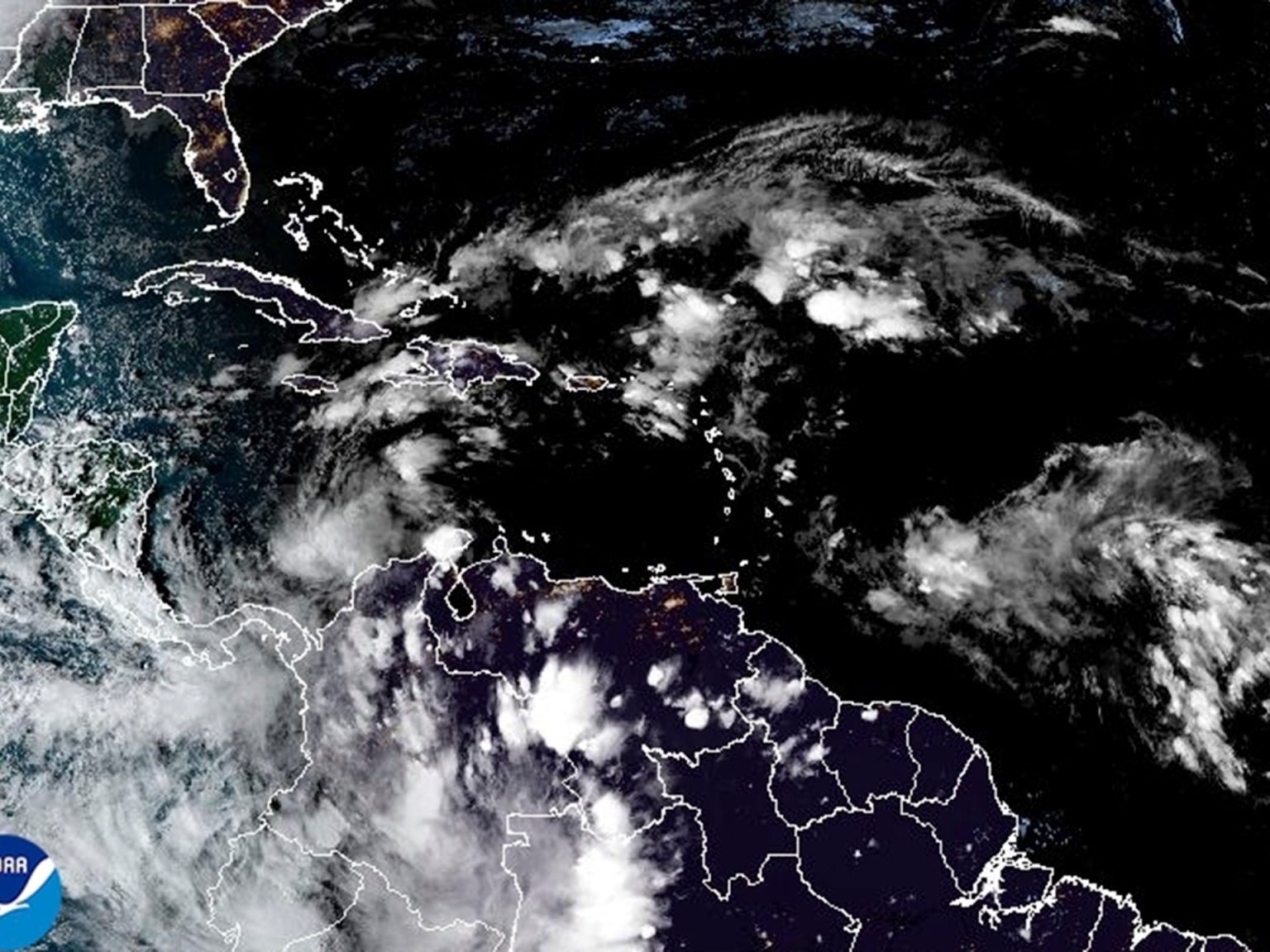A potential hurricane named Rafael is set to form in the Caribbean, bringing heavy rain and mudslides to Cuba before moving into the warm waters of the Gulf of Mexico. Forecasted by the US National Weather Service, Tropical Storm Rafael is expected to strengthen into a hurricane as it approaches Jamaica, potentially impacting the Florida Keys and parts of the southeastern United States with heavy rainfall later in the week. Jamaica and Cuba could expect up to 230mm (9 inches) of rain, leading to potential flooding. The government of Cuba has issued a Hurricane Watch for Havana and eastern provinces like Pinar del Rio and Matanzas. This storm could worsen Cuba’s energy crisis, already facing power outages due to infrastructure issues and fuel shortages after being hit by Hurricane Oscar recently.
Hurricane Rafael is currently a tropical depression located south of Kingston, Jamaica, with maximum sustained winds of 55km/h (35mph) and moving north at 15km/h (9mph). It is expected to become a hurricane before reaching western Cuba by Tuesday or Wednesday, passing west of Florida. The National Hurricane Center forecasts that Rafael, the 18th named storm of the 2024 season, is unlikely to become a life-threatening weather system as it moves towards the US coast over the Gulf of Mexico. The current hurricane season has seen above-average activity with 10 hurricanes already, including major hurricanes Helene and Milton that caused widespread destruction in Florida and North Carolina, resulting in over 200 deaths. Meteorologist Philip Klotzbach mentions that only seven seasons on record have had 11 Atlantic hurricanes by the first week of November.
The formation of Potential Tropical Cyclone 18 in the Caribbean is anticipated to become Hurricane Rafael by November 6, potentially becoming the 11th hurricane of the 2024 Atlantic season. Historically, only seven seasons have recorded 11 or more Atlantic hurricanes by the first week of November, such as 1933, 1950, 1969, 1995, 2005, 2010, and 2020. Hurricane specialist Michael Lowry from Miami notes that there have been only four hurricanes recorded in the Gulf of Mexico in November since 1966, making a late-season hurricane in this region a rare occurrence. The threat of Hurricane Rafael poses significant risks to the affected areas, with the potential for severe weather conditions and further challenges for regions already grappling with natural disasters and energy shortages.
The impact of Hurricane Rafael on Cuba, Jamaica, Florida, and the southeastern US remains a major concern, especially as these areas have already experienced weather-related disruptions and damages. The NHC’s warnings and forecasts are crucial for preparing for potential flooding, mudslides, and power outages. With Rafael expected to intensify into a hurricane and move towards western Cuba and potentially affect parts of the United States, it is essential for residents and authorities to stay informed, follow safety protocols, and take necessary precautions to mitigate the risks of the storm. The Atlantic hurricane season of 2024 continues to be active, with multiple storms causing devastation and loss of life, highlighting the importance of resilience and preparedness in the face of natural disasters.
As Hurricane Rafael forms in the Caribbean and heads towards Cuba and potentially the Gulf of Mexico, the threat of heavy rainfall, flooding, and power outages looms over the affected regions. The impacts of the hurricane season, with 10 hurricanes already recorded and the potential for more, underscore the importance of advanced warning systems, emergency preparedness, and community resilience in facing the challenges brought by severe weather events. The National Weather Service, National Hurricane Center, and meteorologists like Philip Klotzbach play a crucial role in monitoring and forecasting hurricanes, providing vital information to help communities and authorities make informed decisions and protect lives and property. The evolving situation with Hurricane Rafael serves as a reminder of the unpredictable and powerful nature of these storms, emphasizing the need for vigilance and readiness in navigating the dangers posed by extreme weather phenomena.


